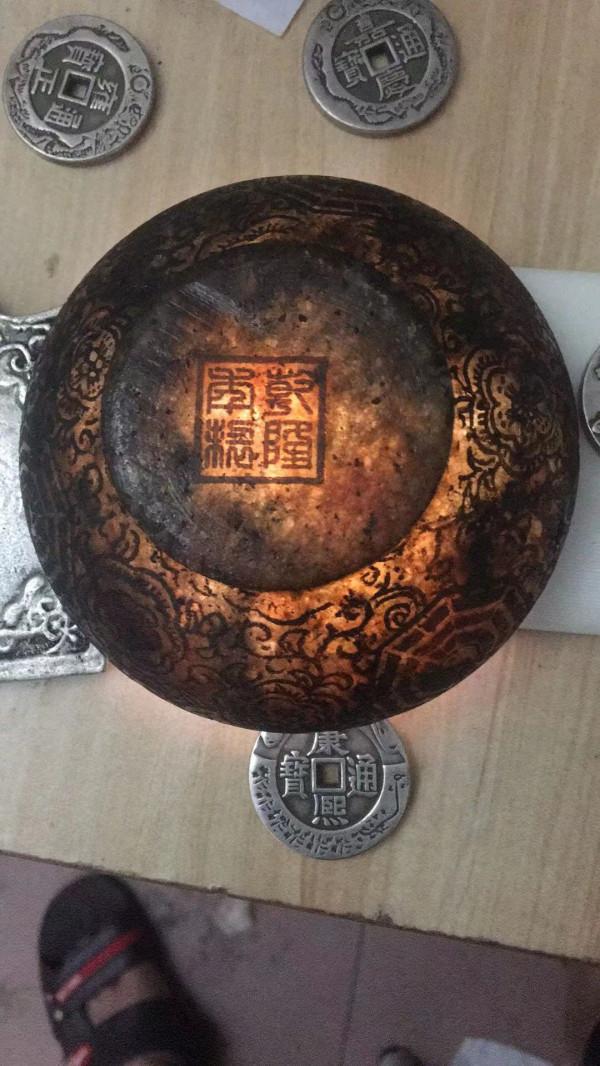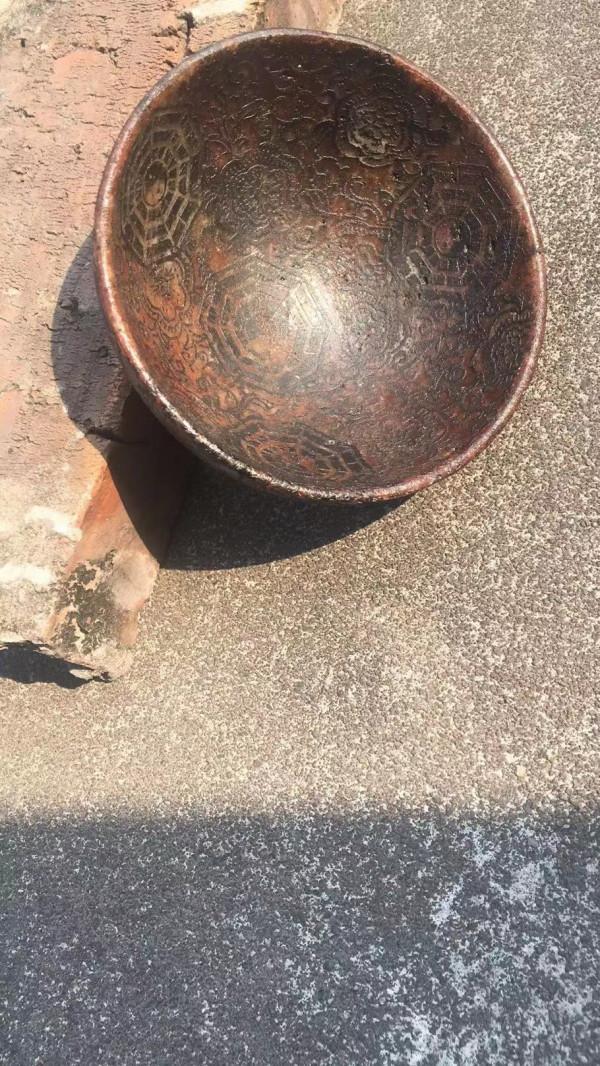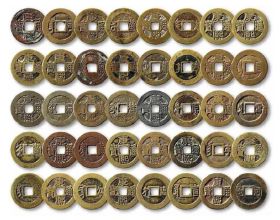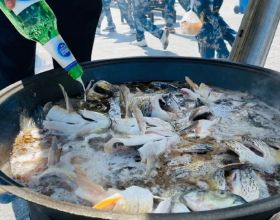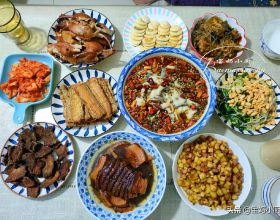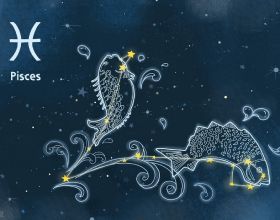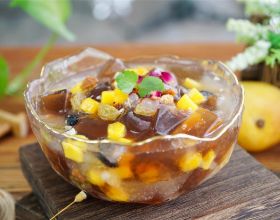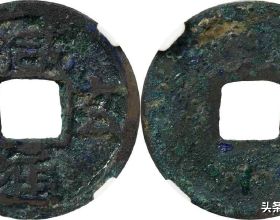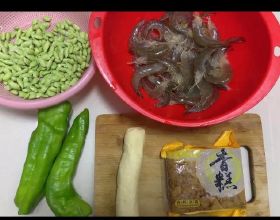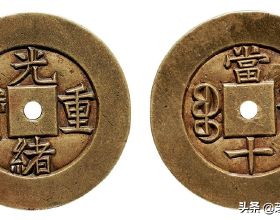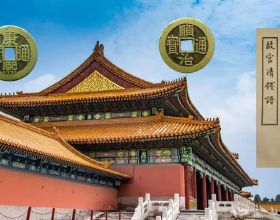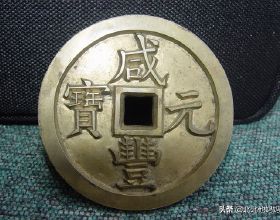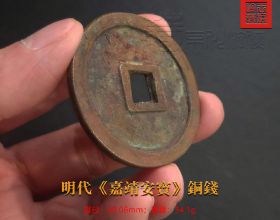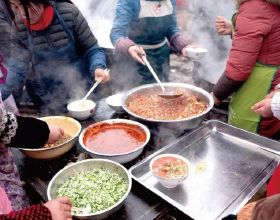乾隆孝粉漢白玉碗為乾隆皇帝親母當時生病,經過御醫治療研發中藥必須配合玉器使用才能達到最佳療效。為此乾隆皇帝連夜命令工匠趕製出玉碗-玉碟-玉杯-玉瓶等。從此被世人譽為“乾隆孝粉”
乾隆孝粉是乾隆年間的一種漢白玉碗,底部刻著篆字,上書“乾隆年制”,後有人誤讀為“乾隆孝粉”,因名字通俗易解而流傳。“乾隆孝粉”玉碗,碗的內外部有花紋,其材質十分精美,用燈光打照,整體十分通透,有玉質光感另外。“乾隆孝粉”(實際是“乾隆年制”)主要是玉碗,幾乎沒有其他造型。上圖中所示藏品現展於銘滬文物銷售平臺,儲存極好,暗刻淺浮雕花卉紋,雕工精細極致,底款書“乾隆年制”四字篆書,工藝十分複雜,就算在當時宮廷也是稀有之物,極具收藏價值。
乾隆年制漢白玉刻花碗
可以看到落款:乾隆年制款,由於字型很容易被誤讀成乾隆孝粉,所以乾隆孝粉就成了它另一個通俗的名字,站在專業的角度,我們稱之為乾隆年制漢白玉刻花碗,碗身刻滿葵花紋飾,而葵花在古代象徵太陽,有著無限光明的寓意。
乾隆玉器之所以深受市場熱捧是有歷史根源的,在各種古玉里,乾隆玉器的質量是很高的。乾隆時期,清軍在西域大舉用兵,重又打通了絲綢之路,使新疆和田玉料大量運進內地,促進了內地玉雕技術和工藝迅速發展,乾隆時期也成為我國古代玉器史上最昌盛時代。
中華民族有著悠久的用玉史與造玉史。清代琢玉的規模、產量、種類,在中國古代玉雕史上是空前絕後的。其工藝水平集歷代工藝之大成,掀起了中國古代最後一個造玉高潮,它藝術成就中最有代表性的便是“乾隆玉”。而我國從2000多年前就發現了漢白玉這麼高潔素雅的原料,利用這種優質原料進行雕刻的藝術創作,也已經有2000多年的歷史了。
可見鐵礦沁色明顯,整體偏紅,證明年代久遠,以沁入內部,碗內遍佈八卦圖,古韻十足,十分耐賞!
這件乾隆年制刻花碗,在燈光下呈現微微透明的表現,光線由內部折射周邊也出現了微透明,這是 天然漢白玉的表現,整件玉碗刻花精美,落款端正,工藝超絕,可以說是漢文版的‘’痕都斯坦玉‘’藏品土沁自然,開門到代,為古玩珍品,屬於罕見的館藏級藏品。
清朝是封建王朝最後一個朝代也是各個民族大統一的朝代,自清朝入關以來到最後清朝滅亡正好是十位皇帝在位。而清朝十位皇帝在位期間所發行的錢幣統稱為“十帝幣”。
十帝幣又名十帝錢,一般是指清朝十個皇帝時期發行的貨幣(即順治,康熙,雍正,乾隆,嘉慶,道光,咸豐,同治,光緒,宣統)。
十帝幣共十枚,而十枚錢幣都集齊及其難得的,又因為其寓意“十全十美”:家庭順治、生活康熙、人品雍正、生意乾隆、事業嘉慶、前途道光、收入咸豐、內外同治、名譽光緒、萬事宣統,所以在民間傳說中十帝幣還叫十運錢,銅錢性質剛,而五行又屬金。銅錢外圓內放,外代表天,內代表地,中間皇帝號代表人,三才具備,力量特別的強大,可鎮壓諸邪扭轉乾坤;它是風水師必備之物品,據說可以旺財、開運、 化解官非是非、化解小人。可擋煞、避邪旺才,招財、鎮宅、避邪、化煞、防小人、行車保平安等。
清代十帝宮錢
清朝有十代皇帝:順治--康熙--雍正--乾隆--嘉慶--道光--咸豐--同治--光緒--宣統。民間稱之為十帝錢!寓意:家庭順治!生活康熙!人品雍正!生意乾隆!事業嘉慶!前途道光!收入咸豐!內外同治!名譽光緒!萬事宣統!
古代的花錢,有一少部分來源於宮廷,這部分花錢被人們稱之為宮錢。宮錢的使用源於唐代,到了清代,宮錢的發展達到了鼎盛。當時宮錢是用官爐鑄造,主要用於皇宮的節日慶典裝飾,每年臘月負責鑄造宮錢的部門都要把一批精鑄的宮錢送入皇宮,作為宮燈的錢墜。清代宮錢,一般正面是年號,背面是天下太平、八卦圖、或者吉語等等。在這些宮錢中,正面是年號,背面是八卦圖的上樑錢是最為典型的一種。宮錢與民間花錢的最大區別在於,宮錢使用的銅質是精黃銅,而且製作也非常精緻。
這二十枚錢幣,枚枚精品,字跡清晰,圖案精美,毫無變形磕缺,品相完美,可達收藏級,以麻繩穿成串,十枚一串為十全十美之意,掛與家中,可驅邪避惡,保平安,收藏最講究藏齊,這二十枚錢幣,包含了清代的始末,收藏齊全,極其難得,具有不可估量的收藏價值。
英文翻譯:Qianlong xiao Powder white jade bowl for qianlong Emperor's mother was ill at that time, after the imperial doctor treatment research and development of Traditional Chinese medicine must be used with jade to achieve the best curative effect. Emperor Qianlong ordered artisans to rush out jade bowls - jade dishes - jade cups - jade bottles and so on. Since then, it has been known as "Qianlong Filial piety Powder".
Qianlong Xiaofen is a kind of white marble bowl made during the Reign of Emperor Qianlong. The bottom is engraved with seal characters. The inscription reads "Qianlong Year", but later it was misread as "Qianlong Xiaofen". "Qianlong xiao Powder" jade bowl, the bowl of internal and external patterns, its material is very beautiful, with light, the whole is very transparent, there is jade light feeling in addition. "Qianlong Xiaofen" (actually "Qianlong Year") is mainly a jade bowl, with few other shapes. The collection shown in the above picture is now displayed in the Ming Hu cultural relics sales platform, extremely well preserved, dark engraved shallow relief flower lines, carvings fine extreme, bottom book "Qianlong year" four-character seal script, the process is very complex, even at that time the palace is also a rare thing, very valuable collection.
Carved white marble bowl during the Reign of Emperor Qianlong
Can see inscribe: qianlong year, because of the font might easily have been mistaken as qianlong filial piety powder, so the qianlong filial piety powder has become another popular name, it stood on the professional point of view, we call this the qianlong year white marble carved bowl, bowl kemen sunflower ornamentation, and sunflower in the ancient symbol of the sun, with infinite bright implication.
Qianlong jade is getting market heat to hold in both hands is to have historical source, in all sorts of ancient jade, the quality of Qianlong jade is very high. During the Qianlong period, the Qing army deployed troops in the western regions on a large scale, re-opening the Silk Road, so that xinjiang Hetian jade materials were transported into the mainland, promoting the rapid development of jade carving technology and craft in the mainland, qianlong period also became the most prosperous era in the history of ancient Chinese jade.
The Chinese nation has a long history of using jade and making jade. The scale, output and variety of jade carving in qing Dynasty were unprecedented in the history of ancient Chinese jade carving. Its craft level sets the big achievement of the craft of past dynasties, lifted the Chinese ancient times last make jade climax, the most representative in its artistic achievement is "qianlong jade". And China from more than 2000 years ago found the white marble so high pure and elegant raw materials, the use of high-quality raw materials for the artistic creation of sculpture, has been more than 2000 years of history.
It can be seen that the color of iron ore is obvious, and the overall color is red, which proves that it is old. It penetrates into the interior, and the eight diagrams are all over the bowl.
The qianlong year hand-cut bowl, under the lights appear slightly transparent, light by internal refraction surrounding, there is a transparent, this is a manifestation of the natural white marble, the whole piece of jade bowls engraved designs elegant, inscribe, majestic, can say is han edition "mark stein ooze natural jade 'collection soil, open the door to the generation, for the antique treasures, and belongs to the rare class library collection.
The Qing dynasty was the last feudal dynasty and the one in which all ethnic groups were unified. From the entry of the Qing Dynasty to the end of the Qing Dynasty, there were exactly ten emperors in power. The coins issued during the reign of the ten Emperors of the Qing Dynasty are collectively called "Ten Emperor coins".
Ten Emperor coins, also known as ten Emperor coins, generally refers to the currencies issued during the ten emperors of the Qing Dynasty (namely shunzhi, Kangxi, Yongzheng, Qianlong, Jiaqing, Daoguang, Xianfeng, Tongzhi, Guangxu, xuantong).
Ten emperor currency ten, ten coin are collected and rare, and because it implies: "perfect" family shunzhi, kangxi, yongzheng and qianlong business character, life career jiaqing daoguang and xianfeng, income, and future, managment, reputation inside and outside, all the xuantong period, so in folklore emperor COINS also called ten luck money, properties of copper, and five lines of gold. The copper coins are round on the outside and placed inside, representing the heaven on the outside and the earth on the inside. The emperor number in the middle represents the people. It is fengshui master necessary items, it is said to be prosperous wealth, open, resolve the officer is not right, resolve the SIMS. Can block evil spirit, evading evil wang just, fortune, town house, evading evil spirit, change evil spirit, prevent villain, driving safety, etc.
Ten emperors palace coins in the Qing Dynasty
The Qing Dynasty had ten emperors: Shunzhi -- Kangxi -- Yongzheng -- Qianlong -- Jiaqing -- Daoguang -- Xianfeng -- Tongzhi -- Guangxu -- Xuantong. People call it ten emperors money! Moral: Family smooth cure! Life Kangxi! Yongzheng character! Business Qianlong! Career Jiaqing! Bright future! Income xianfeng! Cure both inside and outside! Honor Guangxu! All things declared!
In ancient times, a small part of the money came from the palace, which was called the palace money. The use of palace coins originated in the Tang Dynasty, and reached its peak in the Qing Dynasty. At that time, the palace coins were cast in official furnaces and were mainly used for the decoration of the palace's festivals. Every year in the twelfth lunar month, the department in charge of casting the palace coins would send a batch of precision cast coins to the palace as the pendant of the palace lamp. In the Qing Dynasty, the coins in the palace usually had the year number on the front and tianxia Taiping, eight diagrams, or Ji language on the back. Among these coins, shangliang coins with the year number on the front and the eight diagrams on the back are the most typical. The biggest difference between imperial money and private money is that the copper used in imperial money is fine brass and the production is exquisite.
This coin, 20 pieces of fine, clear, beautifully designed, there is no cutting deformation, perfect quality, level of collection, hemp rope through the string, and ten pieces of a string of perfection, hung with the home, can be evil evil, to be safe, to collect the most exquisite hidden qi, the twenty coin, contains the beginning and end of the qing dynasty, the collection is complete, the extremely rare, has inestimable value for collection.

